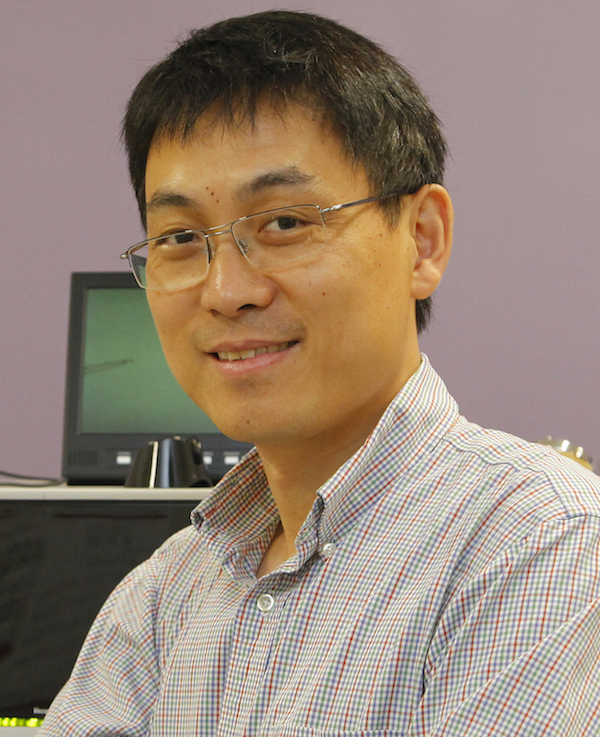International research team finds brain changes linked to sleep need

We’ve all experienced going to bed tired and waking up refreshed, yet how that happens at the molecular level remains a mystery. An international study published in Nature sheds new light on the biochemistry of sleep need in the brain.
The new research reports the first whole-brain, quantitative study of a fundamental molecular process called phosphorylation in the context of sleep need. It features a clever comparison of two different groups of tired mice: sleep-deprived normal mice and Sleepy mutant mice, a variety with a genetic mutation that confers an unusually high sleep need despite increased sleep amount.
The Sleepy mouse was identified in an earlier collaborative study between Dr. Masashi Yanagisawa, Professor of Molecular Genetics, and Dr. Joseph Takahashi, Chair of Neuroscience and a Howard Hughes Medical Institute Investigator. Corresponding authors on the new study are Dr. Yanagisawa; Dr. Qinghua Liu, an Associate Professor in UTSW’s Center for the Genetics of Host Defense and of Neuroscience; and Dr. Yonghao Yu, Associate Professor of Biochemistry and a CPRIT Scholar in Cancer Research.
“Why sleep is needed and how sleep is regulated remain a mystery. We set out to investigate the molecules that govern sleep need,” Dr. Liu said. Sleep need is the feeling of tiredness that builds up during waking hours, he said. For adults, optimal sleep time is generally considered to be 8 hours a day.
In the study, researchers devised a novel strategy of comparing phosphorylation in the brains of the sleep-deprived normal mice and Sleepy mutant mice. Phosphorylation is a reversible process that modifies the functions of proteins by adding a phosphate group. The novel strategy comparing the two mice – one sleepy by circumstance, the other sleepy by nature – made it possible to exclude variables such as stress that could affect sleepiness, the researchers explained.
Using immunochemical assays and mass spectrometry, the researchers identified 80 proteins that were hyperphosphorylated in the brains of sleep-deprived and Sleepy mice, meaning that the proteins accumulated more phosphate groups the longer the mice stayed awake. They named these proteins Sleep-Need-Index-Phosphoproteins (SNIPPs). They found that the phosphorylation of SNIPPs increased with sleep need and dissipated, or dephosphorylated, throughout the brain during sleep.
“The purpose of sleep-wake balance appears to be to maximize the duration and quality of cognitive (thinking) functions of the brain. While prolonged wakefulness leads to cognitive impairment and sleepiness, sleep refreshes the brain through multiple restorative effects and optimizes cognitive functions for the next waking period,” he said. Therefore, the phosphorylation/dephosphorylation cycle of SNIPPs may be an important way for the brain to reset itself every night, restoring both synaptic and sleep-wake balance to maximize clear thinking, he added.
The study’s UTSW co-author is Dr. Yonghao Yu, Associate Professor of Biochemistry and a CPRIT Scholar in Cancer Research.
Dr. Liu is a W.A. “Tex” Moncrief Jr. Scholar in Medical Research.
Dr. Takahashi holds the Loyd B. Sands Distinguished Chair in Neuroscience.
Dr. Yu is a Virginia Murchison Linthicum Scholar in Medical Research.

